Parenting in the digital age comes with its challenges, and one common concern is how to prepare our children for the future best. Coding skills have become an invaluable asset as technology continues to shape our world. Many parents, however, face the challenge of introducing their kids to programming in an engaging and educational way.
In this article, we’ll explore the top 10 kids programming resources designed to make the coding journey not only accessible but also fun for your little ones. As a parent, you may have encountered dilemmas like, “Where do I start?” or “How can I keep my child interested?” We understand these concerns and aim to guide you through the maze of options, providing you with a roadmap for your child’s coding adventure.
Then we will share even more specific recommendations by age group: under 10, 10 to 14, and 15 to 18. If all of these options seem overwhelming, Breakout Mentors works 1-on-1 across these ages to make sure students not only have the ideal starting spot, but also level-up the difficulty as they are ready!
Why Teach Your Kid Coding?
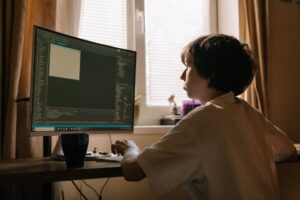
First, let’s delve into the compelling reasons why teaching your kid coding is a decision that can shape their future in remarkable ways.
Future-Proofing Skills
Coding is a foundational skill that opens doors to countless opportunities in a technology-driven world. By giving your child early exposure to coding, you’re equipping them with a valuable skill set that is increasingly in demand across various industries.
Enhanced Problem-Solving Skills
Coding is like solving a puzzle; it encourages logical thinking and problem-solving. As your child learns to code, they develop critical thinking skills that extend beyond the computer screen and into their everyday life.
Creativity Unleashed
Coding is a form of creative expression. It empowers your child to bring their ideas to life through digital projects, fostering creativity and imagination. From designing games to developing apps, coding is a canvas for your child’s innovative spirit.
Building Confidence
As your child successfully tackles coding challenges and sees the results of their efforts, their confidence grows. Coding provides a tangible way for kids to set goals, overcome obstacles, and celebrate their accomplishments, boosting self-esteem.
Preparing for the Digital World
The ability to code is becoming as fundamental as reading and writing in the digital age. Teaching your child to code ensures they are not just passive consumers of technology but active contributors, understanding the language that shapes the digital world.
Collaboration and Teamwork
Coding often involves collaboration on projects. Whether your child works on a coding assignment with a friend or contributes to an open-source project, they learn the importance of teamwork and communication in achieving common goals.
Introduction to STEM Concepts
Coding is a gateway to Science, Technology, Engineering, and Mathematics (STEM). It introduces your child to fundamental STEM concepts hands-on and engagingly, laying the groundwork for future exploration in these fields.
Career Opportunities
Exposure to coding at an early age can ignite an interest in technology-related careers. Whether your child becomes a software developer, data scientist, or pursues another tech-oriented profession, a foundation in coding provides a solid starting point.
Adaptability and Resilience
Coding teaches resilience in the face of challenges. Bugs and errors are part of the coding process, and overcoming them instills adaptability and perseverance in your child.
Fun Learning Experience
Many coding resources for kids are designed as games or interactive activities. Learning to code becomes a fun experience, creating a positive attitude toward education and learning.
The 10 Best Kids Programming Resources and Tools
Your role as a parent is pivotal in nurturing your child’s interest in programming. According to a recent collaborative research effort by Google and Gallup, students who receive encouragement from a teacher or parent are three times more likely to express an interest in learning computer science.
Whether you find yourself navigating unfamiliar territory or are already well-versed in coding principles, your support is crucial. Below, we’ve compiled a list of programming tools for kids designed to assist your child in flourishing as a budding coder.
1. Scratch
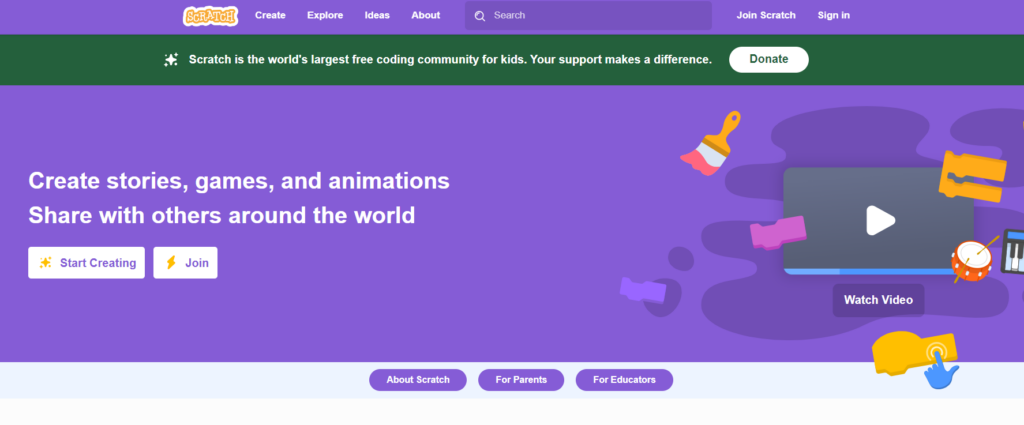
Scratch is a visual programming language that allows kids to create interactive stories, games, and animations by snapping together code blocks. Its drag-and-drop interface is intuitive and encourages creativity, making it an excellent entry point for young learners to grasp programming concepts in a playful environment.
2. LightBot
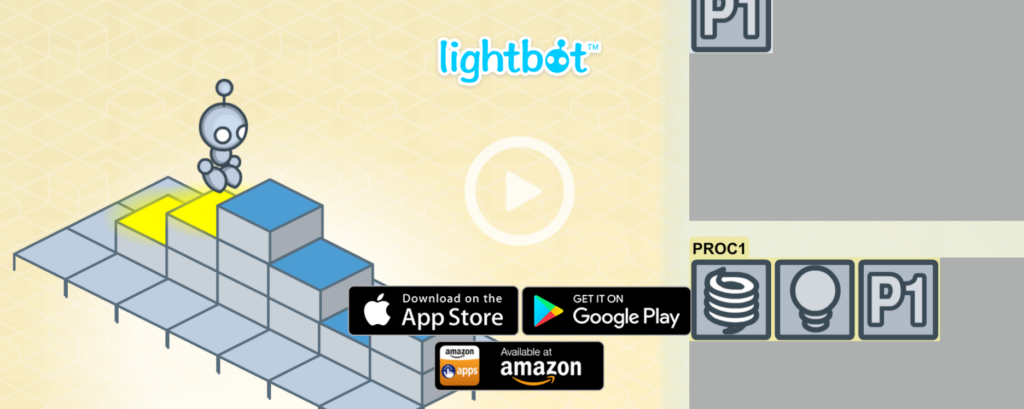
Next, LightBot is a puzzle game that introduces programming logic in a fun and engaging way. Players guide a robot through challenges using programming commands. It’s designed to teach problem-solving and critical thinking skills, making it an ideal tool for introducing coding concepts through interactive gameplay.
3. Kodable
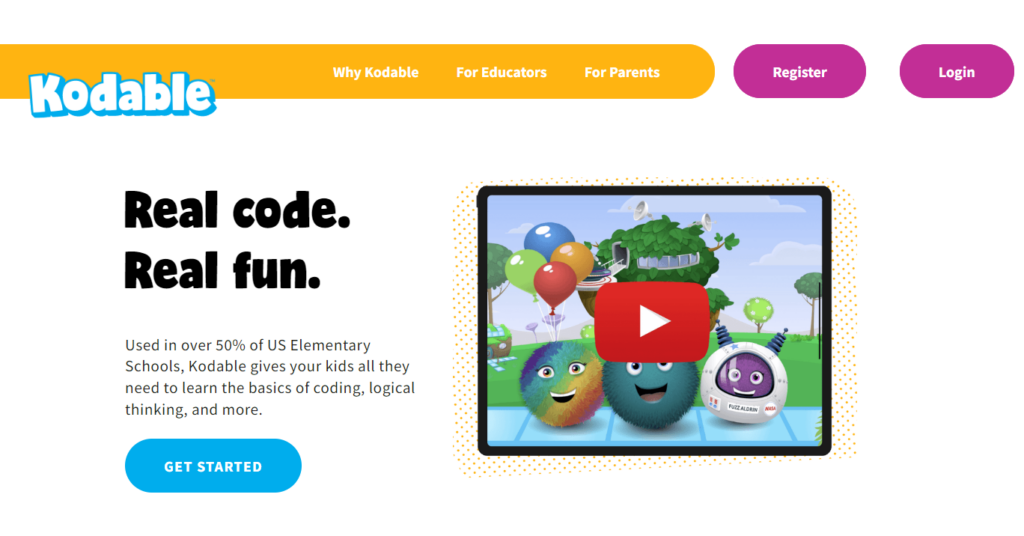
Third on our list is Kodable. It offers a curriculum that combines physical and digital activities to teach coding concepts to young children. With hands-on projects and screen-free coding, Kodable makes learning programming accessible and enjoyable. It provides a well-rounded approach, catering to various learning styles and interests.
4. Minecraft
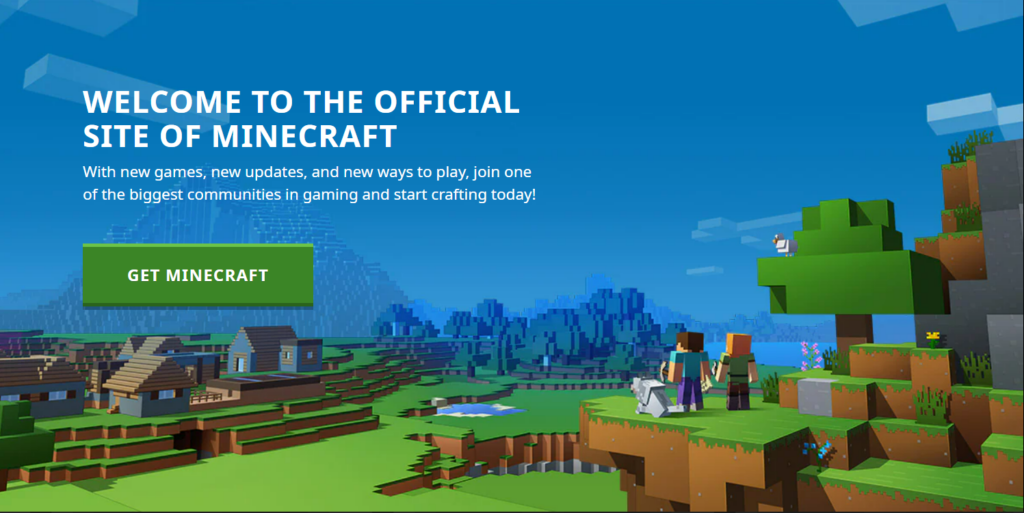
Up next, Minecraft’s “Education Edition” incorporates coding through “Code Builder,” allowing kids to manipulate the game world using code. This makes learning to code more engaging and connects programming to a platform many kids already enjoy. It provides a practical and immersive coding experience within a familiar gaming environment.
5. Code.org
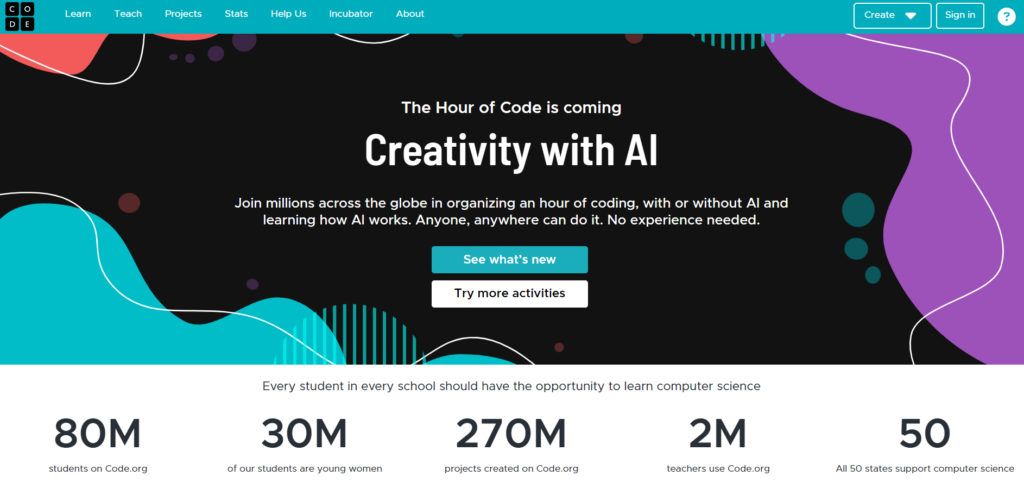
Code.org offers a comprehensive and beginner-friendly platform with various courses suitable for different age groups. It features interactive lessons, games, and projects covering various coding concepts. Code.org’s structured approach and diverse content make it an excellent resource for introducing coding to kids.
6. Microsoft’s MakeCode
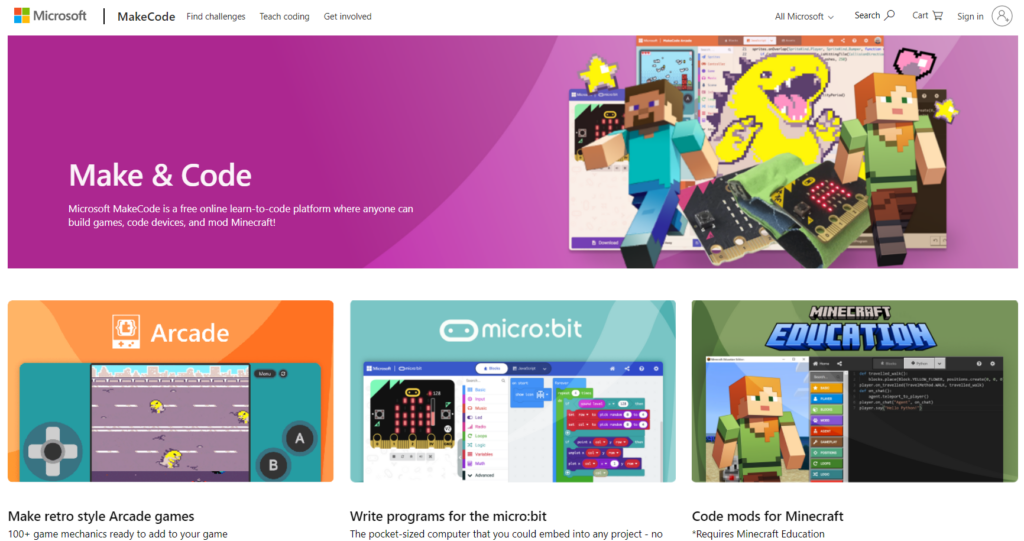
Sixth, MakeCode provides a visual programming environment that supports both block-based and text-based coding. It’s particularly beneficial for kids transitioning from visual coding to more advanced programming languages. MakeCode’s versatility and integration with various devices make it a powerful tool for hands-on coding projects.
7. Hopscotch
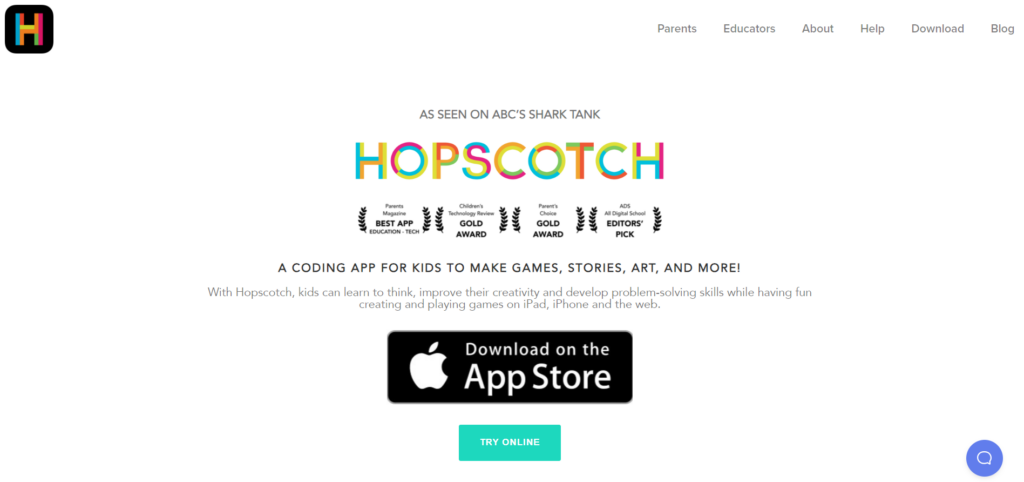
Hopscotch is a user-friendly app that allows kids to create their own games and animations using a block-based coding interface. With its interactive and visually appealing design, Hopscotch makes coding accessible and enjoyable for young learners, fostering creativity and problem-solving skills.
8. SpriteBox Coding
![]()
Next, SpriteBox Coding combines game-based learning with coding challenges. It introduces programming concepts through puzzles and interactive gameplay, making it engaging for kids. The gradual progression of difficulty levels ensures a supportive learning experience for beginners.
9. CS Unplugged
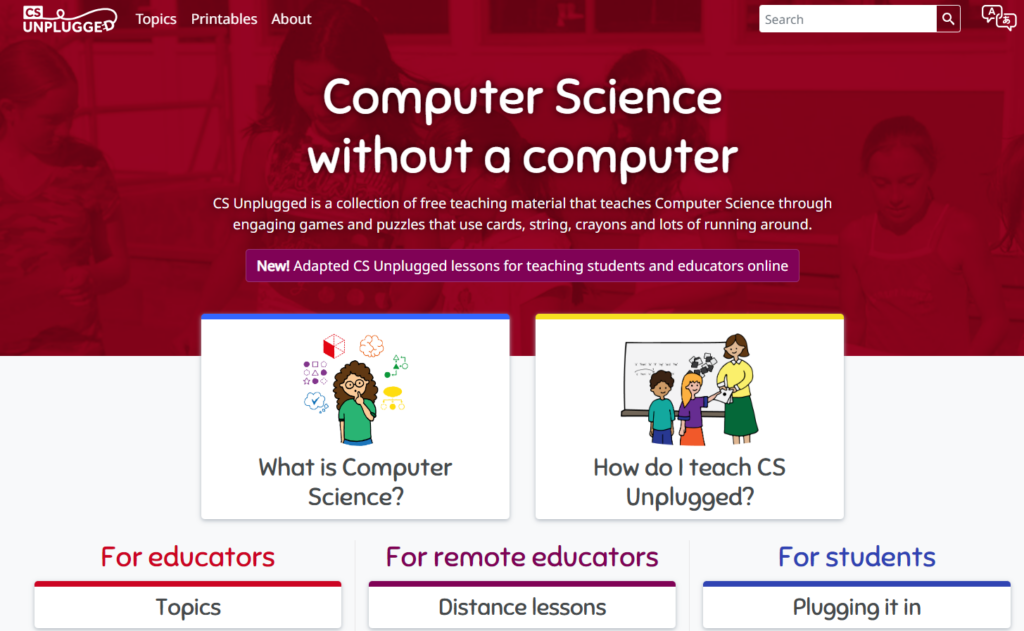
CS Unplugged provides screen-free activities to teach fundamental computer science concepts without the need for devices. It’s an excellent resource for hands-on and interactive learning, making abstract concepts tangible and easy to understand, especially for younger children.
10. Machine Learning for Kids
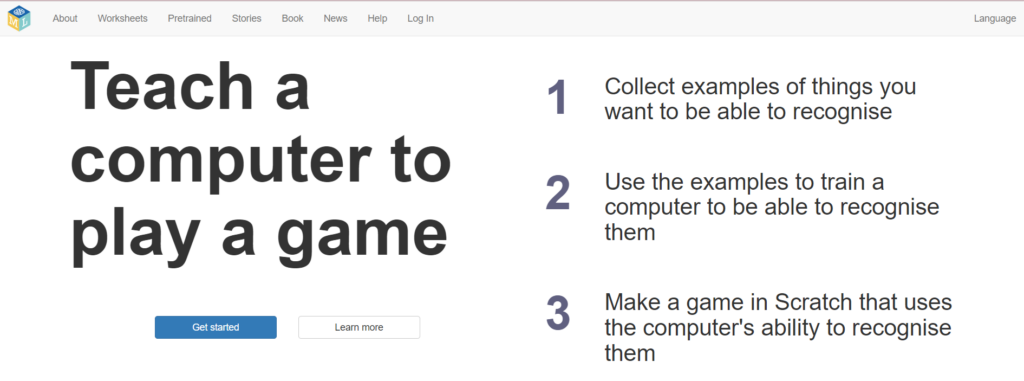
Last but not least, Machine Learning for Kids introduces the concept of machine learning in a simplified and interactive manner. It allows kids to train their machine-learning models using a user-friendly interface. This resource demystifies complex concepts and sparks curiosity about the intersection of coding and artificial intelligence.
There you go with the top 10 kids programming resources. Also, if you want to know more about what kids coding tools are fit for your child’s age, head over to the next section.
Best Kids Programming Resources By Age

Now that we’ve explored various programming tools suitable for kids, let’s tailor our focus to specific age groups. Each developmental stage presents unique challenges and learning opportunities. In the following section, we’ll highlight the best kids programming resources categorized by age, ensuring that your child’s coding journey is educational and aligned with their cognitive and creative growth.
Students Under 10
We recommend starting with games based on providing a list of instructions that are followed by another character. Given that the character will blindly do whatever you say, it requires clear communication to achieve the desired result. This is exactly what computer programming is – the computer blindly follows your code and does what it says!
These games offer a highly structured environment with only a few commands that are allowed. Yet they are challenging because you have to keep the state of the game in your mind – “after the robot moves four steps, turns left, moves one step, and turns right, he will be in this position facing this way.” Simply put, they are an engaging introduction to programming logic.
Here are some of our favorites:
- Light-Bot (online)
- Light-Bot 2 (online)
- Cargo-Bot (iPad)
- Move the Turtle (iPhone/iPad)
- Bee-Bot (iPhone/iPad)
- Kodable (iPad)
Students who enjoy those can move on to the Scratch programming environment. We recommend starting with the Code.org tutorial as a fun way to introduce the different concepts.
Students 10 to 14
Scratch is the top choice for first time programmers to learn the basics through creating fun programs. It is drag-and-drop, which removes some of the barriers to young students learning programming, while at the same time teaching the important concepts.
- Read our article with a more in-depth description of Scratch with examples
- Go to the Scratch website
- Scratch learning resources coming soon
An impressive amount of complexity can be accomplished in Scratch games, but eventually it will be time to move on to a more traditional programming language. This means instead of drag-and-drop, your student will be typing. It’s important that the student can communicate their thoughts to the computer effectively – hunt-and-peck typing will take too long and require too much brain power to be effective for programming.
- TypingWeb provides the top free online course to learn how to type
- A realistic goal should be to not look at the keys and achieve 30 words per minute with very few errors
Python is an excellent choice for a young student’s first type-based programming language. It has a clean syntax and doesn’t require semi-colons or other confusing characters. Python programs can be written entirely in a text editor, so the student doesn’t have to learn an intimidating IDE at the same time.
- Install Python on your computer
- Recommended Python book – Hello World! Computer Programming for Kids and Other Beginners
- Recommended free online Python book – Invent with Python
- Pygame module and resources for creating games in Python
JavaScript is another popular choice and has excellent online resources available. It is a widely used web programming language that is easy to get started.
- Khan Academy features an impressive in browser JavaScript editor that makes is really easy to see the changes you make in your program. There are excellent example programs you can use as a starting place and tutorials to learn more.
- Codecademy offers a series of fun interactive tutorials complete with badges when you complete them.
Students 15 to 18
Many high school and introductory college courses use Java – including the AP Computer Science exam – so Java is often the preferred language for these students.
- For the serious student, we recommend Stanford’s introductory course – Programming Methodology. The website contains video of all the lectures, handouts (essentially a text book), and fun assignments with code to get you started.
Python and JavaScript are also excellent for high school students (see the above resources).
- For the serious Python student, we recommend MIT’s introductory course – Introduction to Computer Science and Programming. The website contains video of all the lectures, links to the reading material, and fun yet difficult assignments. Begin by following the instructions here.
Get Guidance From Breakout Mentors!
In conclusion, embarking on your child’s programming journey is an exciting endeavor, and the kids programming resources mentioned above provide a solid foundation for learning and exploration. Remember that every child is unique, and finding the right fit for their age and interests is key to fostering a lasting love for coding.
For personalized guidance and support, consider Breakout Mentors. Our 1-on-1 kids coding mentorship offers a tailored approach, ensuring that your child receives individualized attention and progresses at their own pace. We are dedicated to making the coding experience enjoyable and rewarding for young learners. Explore the world of coding with confidence, knowing that Breakout Mentors is there to provide expert guidance along the way. So, contact us now and have a happy coding!